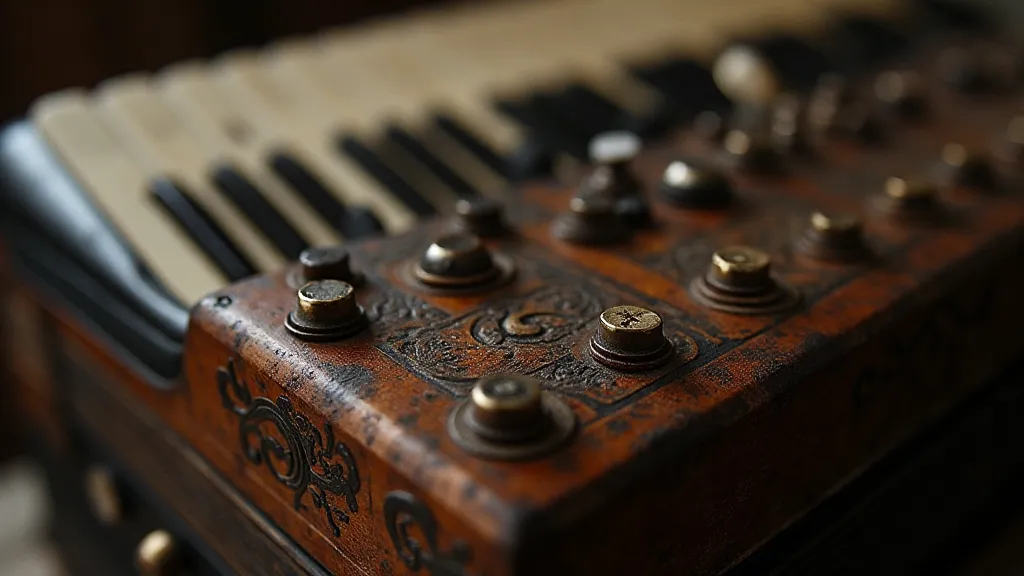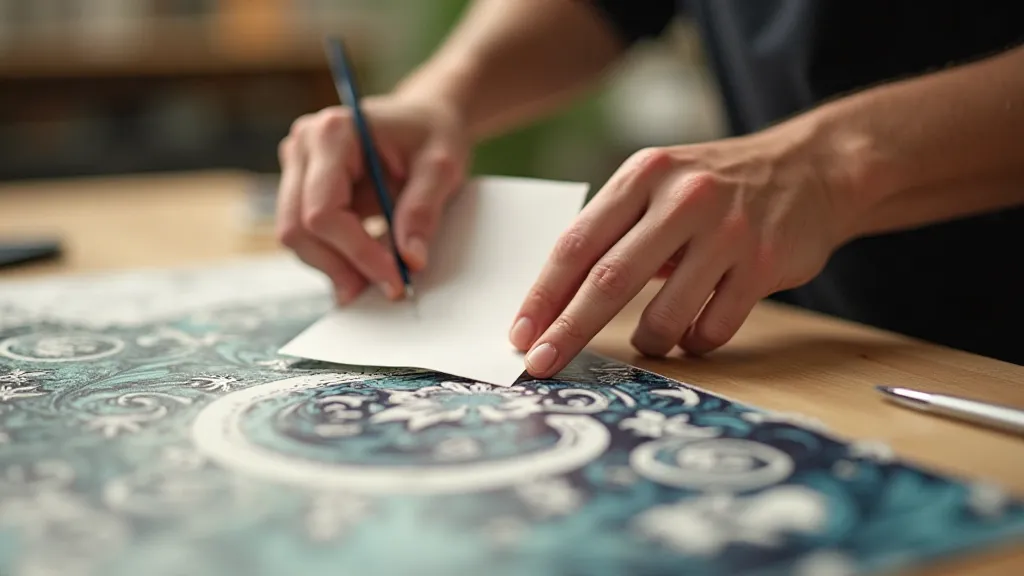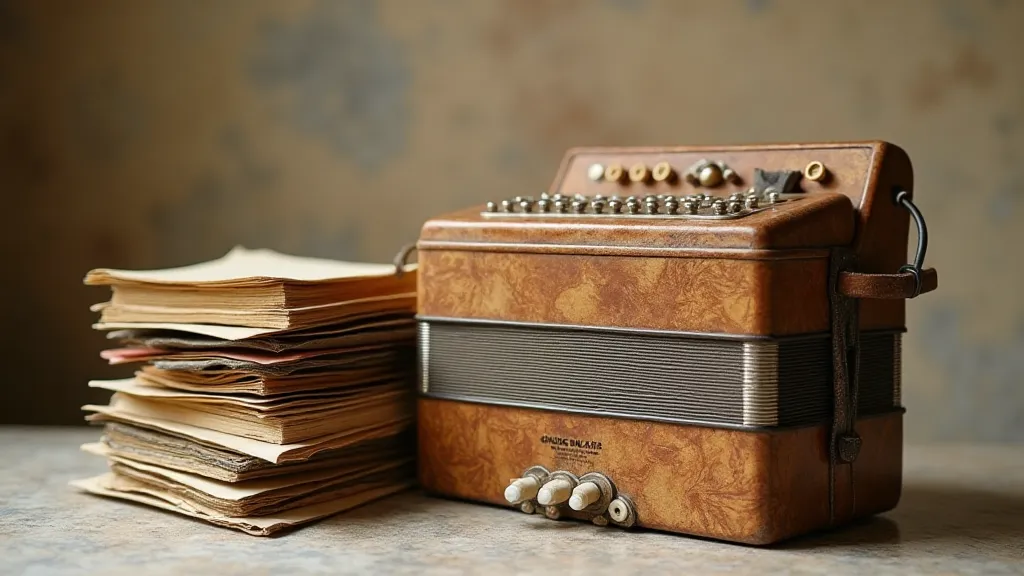Chromatic Dialogue: The Conversation Between Ink and Paper
There's a quiet reverence I feel when I'm surrounded by antique accordions. Not the boisterous joy of a polka band, but a deeper resonance—the memory of countless hands coaxing melodies from bellows and keys, of laughter and shared moments captured in the vibrations of air and metal. They possess a fragility, a vulnerability that speaks volumes about the passage of time. And it’s that same sense of delicate interaction, of something precious and ephemeral, that draws me to the art of paper marbling. It's a conversation, you see—a chromatic dialogue between ink and paper, a dance of pigments on a receptive surface, mirroring, in a profound way, the interplay of words and meaning.

A History Etched in Color
The history of paper marbling, or ebru as it's known in Turkey, is as intricate and layered as the patterns it produces. While variations exist across cultures, its roots are often traced back to 16th-century Turkey, where it was used to decorate the edges of the Qur'an. It was quickly adopted by Ottoman bookbinders, who sought to add an element of beauty and uniqueness to their creations. The process traveled westward, gaining popularity in Italy and then spreading throughout Europe during the Renaissance. Europeans, appreciating the novelty and artistry, adapted the techniques, developing their own distinctive styles.
Interestingly, the secrecy surrounding the techniques contributed to its decline. The knowledge was passed down within families or small guilds, making the art form relatively inaccessible to outsiders. The Renaissance ended, tastes shifted, and mass production diminished the allure of handmade, uniquely decorated paper. For a time, ebru almost vanished, a forgotten treasure buried beneath the relentless march of industrial progress. It wasn’t until the late 19th and early 20th centuries that a renewed interest arose, largely thanks to the efforts of Turkish art historian Ahmed Hilmi Efendi, who documented and revived the traditional methods.
The Alchemy of Interaction
What sets paper marbling apart is the unpredictable nature of the process. It's not about control, but about embracing the unexpected. The core principle is simple: pigments are floated on a thickened water bath, often carrageenan or methylcellulose, and then transferred onto paper. However, the complexity lies in understanding how these pigments interact with the water, with each other, and most importantly, with the paper itself.
The paper, you see, isn’t just a passive recipient. Its character – its weight, its absorbency, its surface texture – fundamentally shapes the final pattern. A heavily sized paper will resist the ink, creating crisp, defined edges. A more absorbent paper will allow the pigments to spread, resulting in softer, more blended designs. And just like an old accordion, whose wood has aged and absorbed the music of countless melodies, each sheet of paper carries its own unique history, contributing to the chromatic conversation.
A Personal Reflection: The Joy of Impermanence
I first encountered paper marbling quite by accident, while searching for a way to personalize handmade journals. I was immediately captivated. There's a certain meditative quality to the process – the gentle swirling of the colors, the slow, deliberate placement of the paper onto the surface. But the real magic comes in the moment of transfer, the unveiling of the pattern that emerges from the thickened water. Each print is utterly unique, a fleeting moment captured in color and texture.
There's a certain melancholy beauty to knowing that each marbled sheet is ephemeral. While we strive for technical perfection, we must also accept the inherent imperfections – the bleeds, the variations in color density, the unexpected blooms. These are not flaws, but rather the fingerprints of the process, the evidence of the chromatic dialogue taking place. They speak of a human hand at work, of a conversation between artist and material that cannot be replicated exactly. It reminds me of the fragility of an old accordion, the way its bellows sigh with the weight of history, the way its keys, worn smooth by countless performances, tell a silent story.

Craftsmanship and Restoration – A Parallel Path
The craftsmanship involved in both paper marbling and restoring antique accordions shares a surprising kinship. Both require a deep understanding of materials, a reverence for tradition, and a willingness to embrace imperfection. A restorer of accordions must carefully assess the instrument's condition, understanding the properties of the wood, the leather, and the metal components. They must clean, repair, and sometimes replace parts, always striving to preserve the instrument’s original character.
Similarly, a paper marbler must understand the nuances of their materials – the pigments, the sizing agents, the paper itself. They must experiment with different techniques, learning how to manipulate the pigments to achieve the desired effects. And just as a restorer might replace a damaged reed in an accordion, a paper marbler might adjust their technique to compensate for a flawed sheet of paper. Both endeavors demand patience, skill, and a deep appreciation for the beauty of imperfection.
Collecting and Preservation – A Legacy to Protect
For those drawn to the beauty of handmade artistry, both marbled paper and antique accordions offer a compelling opportunity for collecting. Marbled paper, particularly examples from the 16th to 18th centuries, can be quite valuable, especially if they are associated with specific workshops or bookbinders. Collecting marbled paper isn’t just about acquiring beautiful objects; it’s about preserving a piece of history, safeguarding a tradition that has been passed down through generations.
The same holds true for antique accordions. Collectors often seek out instruments with historical significance—perhaps those played by famous musicians or those that represent a particular era of accordion design. The process of collecting and preserving these instruments is a labor of love, requiring careful research, meticulous cleaning, and sometimes, expert restoration. It’s a way of ensuring that these beautiful objects continue to resonate with audiences for generations to come. And, like the silent, swirling hues of marbled paper, these instruments whisper stories of a past brought beautifully back to life.






